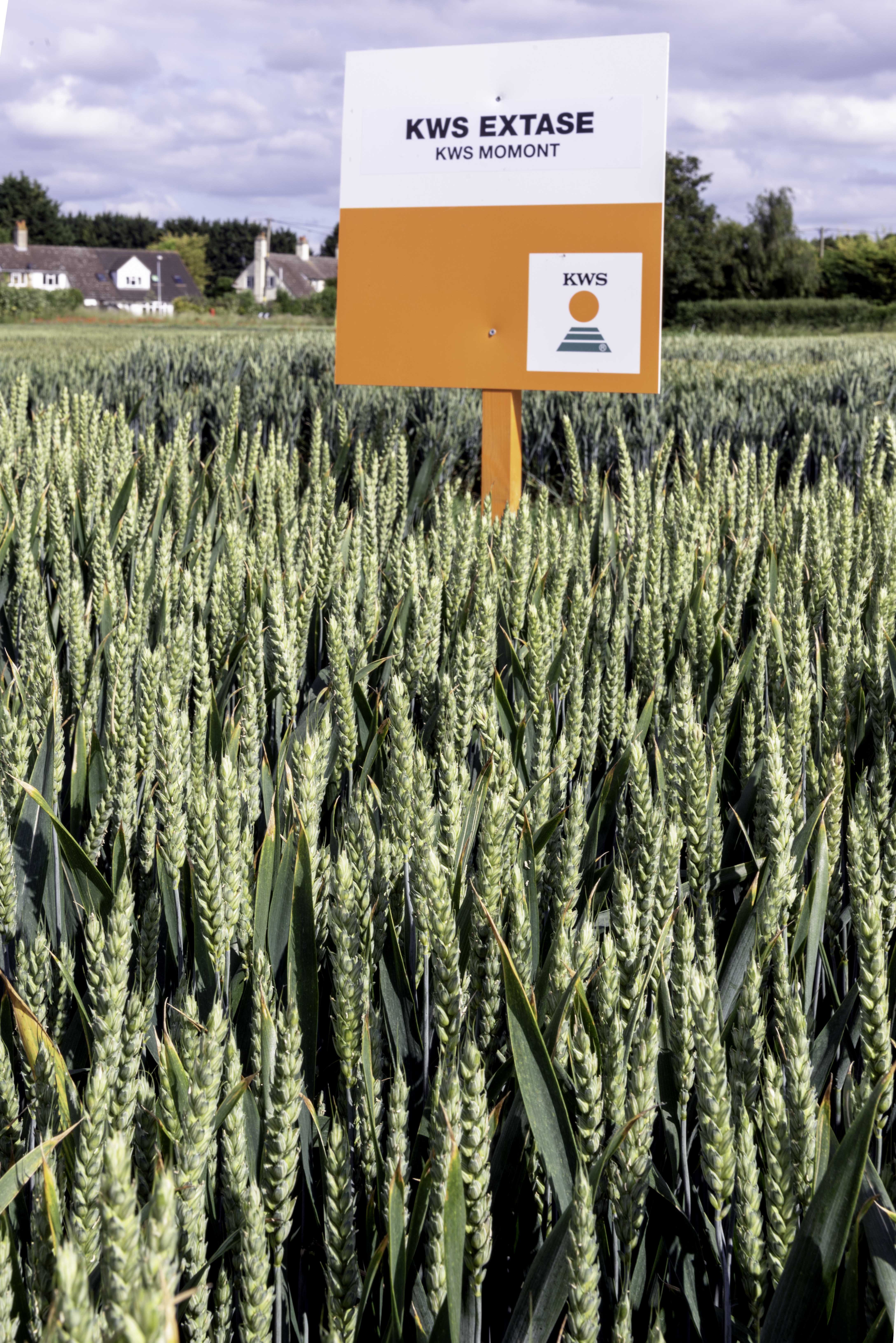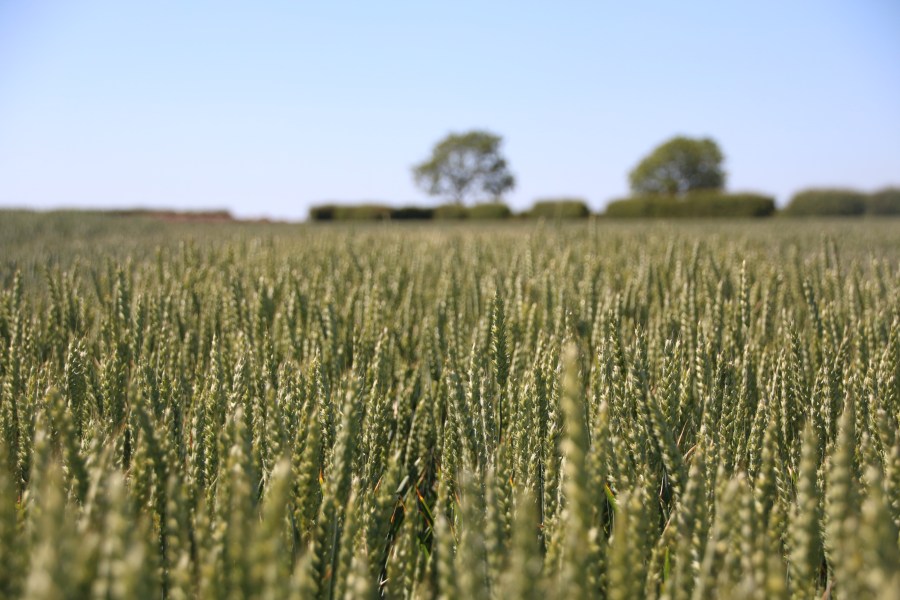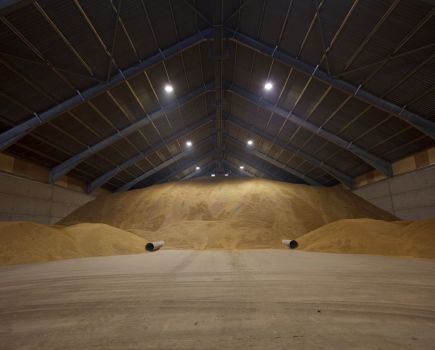KWS Extase, a Group 2 wheat that’s proven disease resistance doesn’t mean compromising on anything, has something for everyone to get ecstatic about.
The difference between treated and untreated yield is one of the most important factors with varietal selection.
By Melanie Jenkins
KWS Extase isn’t the first French-bred variety to find firm rooting on UK farms, in fact, regardless of current Brexit ructions, the future of home-grown wheat could well become more French.
Joining a number of other varieties, KWS Extase is an example of French breeding that suits UK growing conditions with aplomb. It unifies a standout Septoria tritici score with an untreated yield unrivalled on the AHDB Recommended List and has high grain quality – likely ticking box after box for farmers targeting reduced reliance on chemical inputs.

Disease resistance in varieties is going to become even more important as the chemical armoury is depleted.
Its French parents – Boisseau x Solheio – bring different genetics to the UK, introducing new tolerances and resistances, explains John Miles at KWS. “Despite being bred in Northern France, it’s highly suited to the UK. Along with Denmark, Northern France is the closest part of the Continent to the UK in terms of growing environment.”
KWS Extase may help farmers tackle a key challenge up and down the country: that of reduced fungicide efficacy and increasingly restrictive legislation. “We see varieties like KWS Extase being useful as part of a considered disease management programme, particularly with questions over the future of actives such as chlorothalonil and triazoles,” says John.
“We’re investigating the basis of disease protection under a post-2020 regime with the big research and development manufactures. It’s clear that there’ll be a period where managing disease will be hard for agronomists to achieve until new products receive approval. This is why KWS Extase is so exciting. We’ll need good high yielding and disease resistant varieties when times get tough.”
As well as its 8.1 septoria score KWS Extase has other characteristics that stand out, says John. “There’s no point in high disease resistance if the yield is off pace, but this has no yield or disease compromise for growers to make.”
Bill Clark at NIAB TAG doesn’t feel that yield is quite as important as it was. “It’s now about ease of management and lower risks.”
It’s a good job really, as Barry Barker at Agrii points out: though the variety’s yield is no compromise for such a high septoria score, it’s certainly not competing with hard feed wheats. That said, it does seem to be the complete package. “It ticks all the boxes with disease and good genetics.”
Jonathan Baxendale at Wynnstay Group has seen varieties that have topped KWS Extase’s septoria score, but these have all had other weaknesses. “Those before have not had this complete agronomic package. The only drawback is that it’s not got the highest out-and-out yield.”
As little as five years ago the highest yielding varieties seemed to be dirty in the field, says Bill. “There was also always some penalty to having disease resistance. But now we have a high yielding variety that’s not dirty, we’re moving in the right direction.”
However, whether growers select a higher yielding variety or one with greater robustness, there’s no ‘cheap to grow’ option, warns John. “Though there’s no guaranteed level of savings, there’s definitely the potential to use less inputs than with varieties such as KWS Santiago.”
As well as KWS Extase, the top five varieties from different groups are quite modest in terms of fungicide spray requirements, says Bill.
He suggests that there’s potential to drop T0 applications with KWS Extase, but it would still need an SDHI and triazole at flag leaf stage. “But T1 could be very modest and at lower doses.” Growers could therefore slash their fungicide costs by half compared with more disease prone varieties. “Having as many as four sprays also creates issues with timings and if you muck things up it makes life difficult. So it’s for farmers wanting to reduce the risks of yield loss and save on fungicides. It’ll probably be a two-spray programme variety.”
But varieties still need and will respond to fungicides, says John. “Having flexibility with timings is a highly valuable option. KWS Extase can help stop disease building if you’re late with sprays. And a lot of sprays are still very good when used as protection – it’s the eradicant efficacy that’s suffered.
“The more resistant varieties restrict the build up of septoria and help protect the performance of the chemistry as well as the yield that could otherwise be lost if you’re late with sprays,” explains John.
“But fungicides are still an insurance policy and there’s a benefit to protecting the resistance in the plants,” he urges. “Growers already mix actives and modes of action in the sprayer tank. Post 2020, good disease-resistant varieties will increasingly come to be seen as another mode of action. But if we don’t protect them, they’ll lose some of that strength – so use varieties and chemicals together to make resistance optimal. It’s simple stewardship of a variety – make sure it’s not here today and gone tomorrow.”
KWS Extase looks like a really good tool for those with septoria problems, agrees Chris Piggott at Frontier. “Its resistance is just outstanding. In the next year or two we will lose key chemicals. So the genetic resistance will play more of a role in areas where pressures are high.”
The variety has the highest untreated yield on the RL, scoring 95% of the control, but it still has a six percentage point response to fungicide, points out John. “Even the cleanest variety has a response to chemistry; if you’re growing KWS Extase, it’s still worth looking after.”
It has also been trialled by Frontier and Chris has not been disappointed by what he’s seen of it. “Trials have reassuringly backed up what it says on the RL. The disease levels are low in it at our sites, even where there’s high pressure.”
He’s also observed that on Frontier’s lighter land site, the yield result was good. “It’s a high-risk rust site but it was the highest yielder there. The untreated yield is also very strong.”
Chris Guest at Gleadell agrees that the untreated yield is outstanding. “As a risk management tool, it’s a no brainer for most UK farmers. In my opinion the difference between treated and untreated yield – which shows the level of yield at risk – is one of the most important factors with varietal selection given the issues surrounding fungicide active loss.”
Over the past few years, earliness, maturity and robust grain quality in later drilled wheats have become more important, says John. “We lean on varieties more, so qualities like earliness are far more important than others.”
However, it’s still important to schedule varieties so things like spraying and harvesting can be done in a block, he adds. “This way varieties can be done bit at a time. KWS Extase’s earliness of movement in spring and its early maturity allow the spread of logistical management.”
Chris agrees that there’s a trend towards later drilling. “A lot of our trials are trying to reflect what happens on farm and similar to KWS Siskin, KWS Extase has been fast to develop and then tillers well – so it’s suited to the main window.”
On the farm, KWS Extase looks to be a great partner to KWS Siskin, says John. “They have a similar growth habit but KWS Extase is just that bit earlier to mature and I think KWS Siskin will remain the higher yielder of the two.”
In terms of quality, it has a high Hagberg and good protein, but it’s KWS Extase’s specific weight that is most important, points out John. “What’s unique is that all varieties before it that had high septoria scores had poorer grain quality. To have both in KWS Extase is a varietal first. At 78.6kg/hl, it’s humongous.”
Frontier trials data backs up the specific weight figures, says Chris. “It’s had the equal second highest specific weight alongside Costello at all of our trial sites.”
The fact that growers won’t need to compromise on grain quality has really stood out to everyone. “Look at the popularity of Costello,” says John. “A quality wheat with good grain means more homes available, giving growers lots of options. If there’s a market for Group 2s available but the crop has been grown as a feed, then that’s a few pounds in farmers’ pockets.
But Group 2s are still incredibly important in the UK grist and there’s a market for them, he adds. French millers also like the variety, which means there could be potential for export – and as a ukp approved variety it offers this opportunity.
However, Chris points out that it’s early days in terms of end user interest. “We will learn more over the next couple of seasons as millers get access to more tonnage.”
In the UK the variety has stood out to a lot of farmers as it has been the best looking one on trial sites, says Barry. “Particularly to farmers based in the West Country as septoria is still a guiding factor.”
Chris agrees that its septoria score has prompted a lot of interest. “As a Group 2 this could narrow interest, but a lot of other varieties are now grown out of their Group and people are increasingly looking to grow Group 1s and 2s as feeds. It’ll suit those who want grain quality and want a high yielding, protected feed. Growers are looking to have more options – whether that’s disease characteristics or markets – and this is a variety that does many things and not just one.”
Though it’s a tall variety, it has got stiff straw, says Bill. “It’s taller than most but is stiff so growers can still use a good PGR programme on it.”
The only box KWS Extase doesn’t tick is that there’s not enough around for everyone to grow it this year, says Barry. “It also needs a difficult year to fully test it, but there’s no reason to believe it would perform badly in a worse year. I’ve seen it over several years and the yield performed well last year compared to others, which boosted it up relatively speaking.”
Jonathan concurs that KWS Extase is likely to sell out this year. “Seed supply is relatively short and Wynnstay is expecting to sell out, so get in early.”
As with all new varieties, it won’t be readily available in large quantities in the first year, agrees Chris. “As much as is available will sell, which does look good from our perspective.”
According to Barry, it could be one of the top varieties for the next three years or so. “It’s certainly the best to market this year. The top three varieties in the UK over the next three years are likely to all come from French breeding. It’s interesting that the genetics that are standing out are those from the Continent and would not necessarily have been picked out over here.”
The limitations on stock seed this autumn mean it’ll likely have 2-3% of market share with a big increase the following year, explains Barry. “KWS Extase could account for 7-9% of the wheat in the ground from 2020, similar to Skyfall and Graham.”
It’s likely to take market share from Group 4 varieties as some farmers will wish to grow it as an out-and-out feed, says Barry. “Probably a good 50% of its sales will be to grow it as a feed wheat and there’ll be a big demand in the 100-mile radius around Bristol as it looked very good in our trial sites in the South West.”
Chris suggests that its market share will likely top out at 10-12%. “Within a couple of years it could get to this level if it performs as well on farm as it has done in trials.”
The key is that KWS Extase is a versatile and reliably high-yielder, says John. “It will appeal across regions and offers something for everyone.”
KWS Extase at a glance





